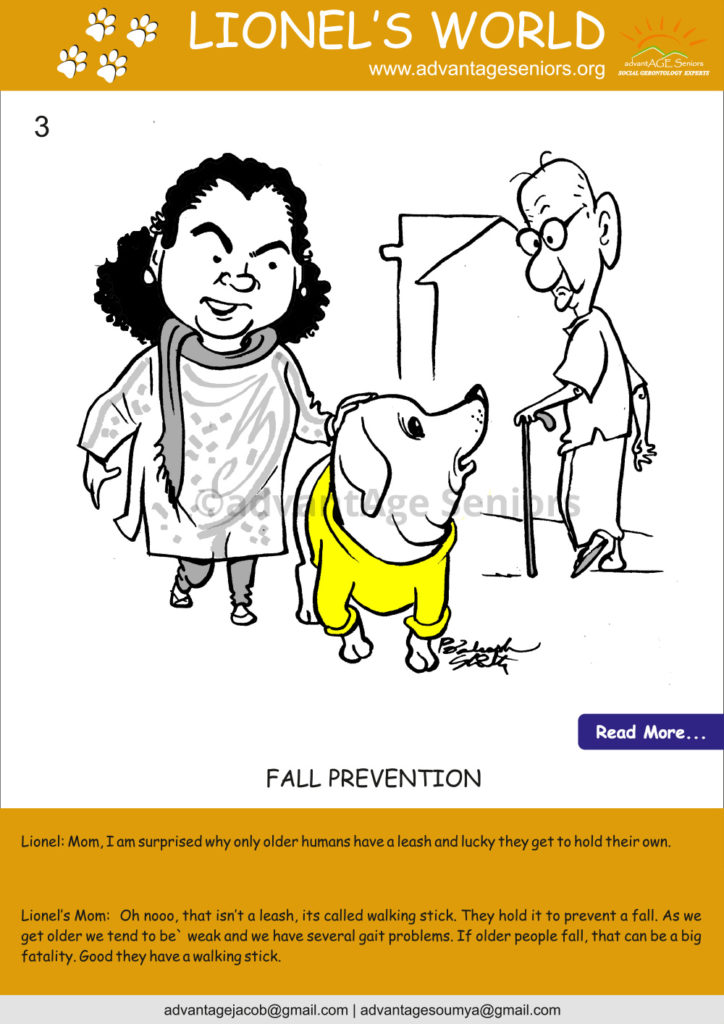
Falls are all too common in the geriatric population, and they have devastating consequences. Most elders overlook the fact that ‘falls put them at risk of serious injury’. Fall prevention in the elderly is very important but unfortunately may not seem like a priority.
As we get older, physical changes and health conditions — and the medications used to treat those conditions — make falls more likely. In fact, falls are a leading cause of injury among older adults.
A person who falls may subsequently experience pain, hospitalisation, surgical intervention, admission to a nursing home, decreased overall functional ability, poorer quality of life, or constant fear of falling. It doesn’t mean you have to live in constant fear of falling, but we suggest to have precautions.
Here we suggest few simple fall-prevention strategies.
- Older adults may suffer from one or more chronic medical conditions. While it’s not the only contributor to falls, your medical condition is obviously a potential factor. If you or your loved one suffers from any medical condition, ask your doctor if this condition could increase the risk of a fall.
- Make a list of the prescription and over-the-counter medications and supplements, and tell your doctor about this. Your doctor can review these medications for side effects and interactions that may increase your risk of falling. To help with fall prevention, the doctor may consider weaning you off from some medications that make you tired or affect your thinking, such as sedatives and some types of antidepressants.
- If you avoid physical activity because you’re afraid it will make a fall more likely. Physical activity is very important and it can go a long way toward fall prevention. With your doctor’s approval, consider activities such as walking, water workouts or yoga — or a gentle exercise that involves slow and graceful dance-like movements. Such activities reduce the risk of falls by improving strength, balance, coordination and flexibility.
- As part of your fall-prevention plan, consider changing your footwear. High heels, floppy slippers and shoes with slick soles can make you slip, stumble and fall. Instead, wear properly fitting, sturdy shoes with nonskid soles and better to have back straps. Sensible shoes may also reduce joint pain.
- It is possible that the home environment may create falling hazards. A cluttered home, or one that otherwise puts obstacles in your way, can cause a fall even if your health and physical condition don’t predispose you to one. In addition, temporary variations in the home environment like water or oil in the floor, can create problems even if the home is normally without risks.
Considering the devastating effects of falls have on patients and the increased burden on family members and the health care system, screening and assessment for fall risk have to be of paramount priorities.
We suggest periodic screening which may be easily performed in the ambulatory and hospital settings, with simple interventions producing meaningful results.
With each fall that is prevented, the old person, their family members, the health care team, and the health care system all benefit. By adopting a little planning and by taking concrete steps, this threat can be reduced or eliminated, giving the elderly person many years of independent living
